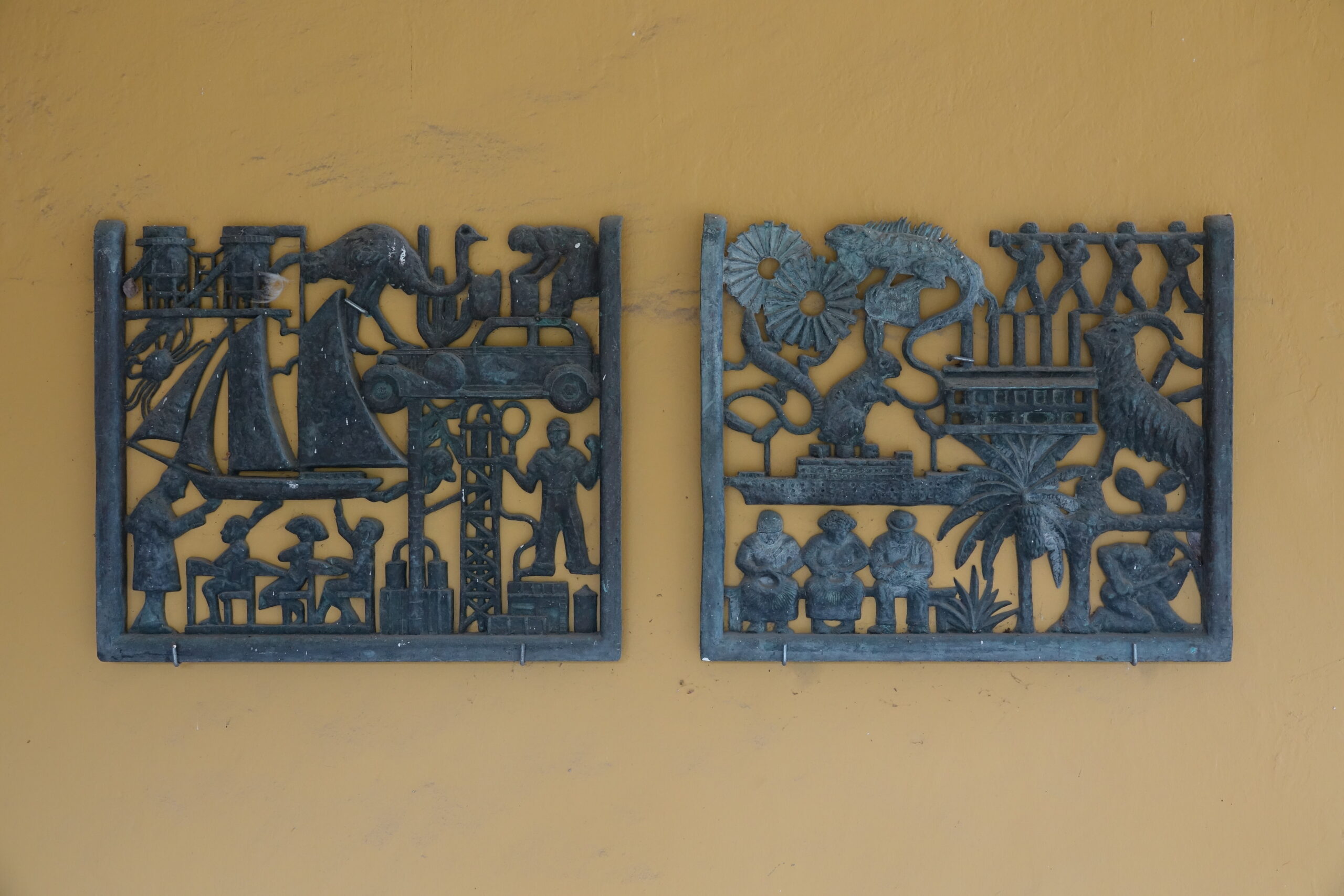Panels from the commemorative monument, presented to the Curaçaoan population in 1934 on behalf of the Curaçao Petroleum Company (CPIM) and the Curaçao Shipping Company NV (CSM), in honor of ‘300 years’ commitment to Curaçao, bronze, 60 x 3 x 51 cm each. The 5 meters tall concrete monument stood between Wilhelminaplein and Breedestraat in Punda. The monument was decorated all around with bronze reliefs that represented the conquest of Curaçao by the Dutch. In 1634 Johan van Walbeeck had captured the island from the Spaniards by order of the Dutch West India Company. After the monument was removed, two of the bronze panels ended up in the collection of NAAM. These are now on loan to our sculpture garden. It is not know what happened to the other panels. The panels were made by Gerrit Jan van der Veen (1902-1944), born in Amsterdam. Van der Veen started his career as an engineer at the CPIM. In gratitude for his heroic action during a fire on an English tanker in the harbor, a deed that prevented a large conflagration at the refinery, he received a sum of money from the CPIM. With this capital Van der Veen was subsequently able to pay for his studies at the Rijksacademie in Amsterdam. He started his studies in 1928 and four years later he received the Prix de Rome. In 1934 he was commissioned by the CPIM to produce the commemorative monument. A further six years later, his artistic career came to an abrupt end due to the outbreak of the Second World War. Gerrit Jan van der Veen refused to submit to the culture chamber established by the Germans and joined the resistance. In 1944 he was taken prisoner and executed. Posthumously he received the Resistance Cross 1940-1945. A street and a school in Amsterdam are named after him, and in 2003 Yad Vashem honored Gerrit Jan van der Veen as a Righteous Among the Nations.

